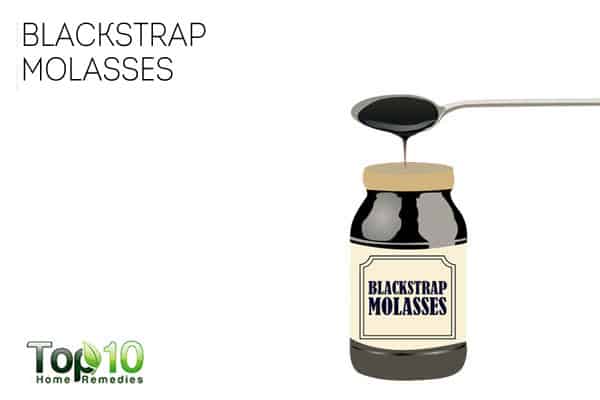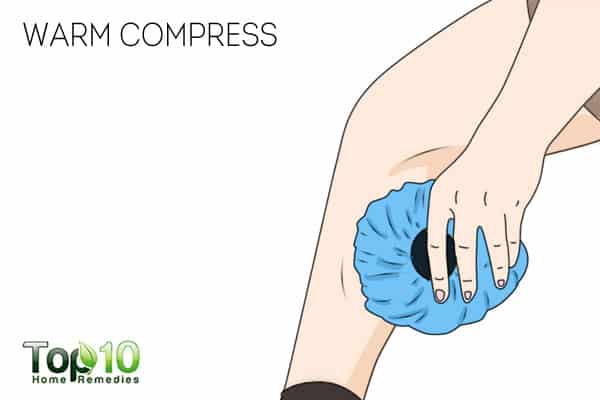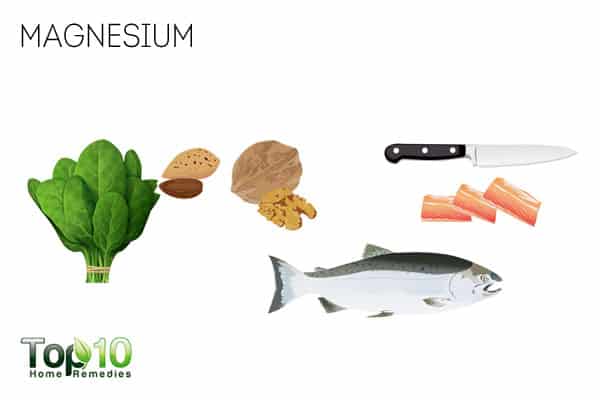Leg cramps can strike out of the blue and cause excruciating pain. It
can last for less than a minute or torture you for much longer. Many
people suffer from leg cramps primarily at night.
It occurs due to involuntary contractions or spasms of the muscles in your legs. It can affect the calf muscles, thigh muscles and even involve the hamstrings and quadriceps.
Leg cramps can attack anyone including both children and adults, but pregnant women and the elderly may be more prone to it.

You are also more likely to suffer from lower leg cramps if you do exercises that rely heavily on the leg muscles, such as recreational running, weight training using the legs or sports that require a lot of running.
Other risk factors include nutritional deficiencies, muscle fatigue, dehydration, alcoholism, kidney failure, thyroid issues, Type 2 diabetes, vascular disease, being overweight, imbalance of electrolytes, circulatory problems, hormonal imbalance, neural disorders and restless legs syndrome.
Leg cramps can be very painful and often occur suddenly, but they may give warning signs like tingling and twitching of the muscles before you feel the abrupt pain. Other symptoms include swelling and soreness in the affected area. Also, when having the cramp, you may not be able to move your leg.
If you experience leg cramps, you can alleviate the pain and even prevent the problem with some lifestyle changes and home remedies.
Here are the top 10 home remedies for leg cramps.


Taking a walk sends a signal to your brain that your muscle needs to contract and then relax. This will ease the tight muscles and provide relief from the discomfort.
If you cannot join a gym or devote time to do intense exercise, try walking. Do 30 minutes of brisk walking daily.
Caution: If stretching causes more intense pain, stop doing it.

Massaging the cramped area increases circulation in the tissue, which provides a rush of new fluid to relax the tense muscle.
However, before using this remedy, bear in mind that massage can cause a lot of pain in the beginning but soon the pain will be gone.

The magnesium in Epsom salt promotes muscle relaxation and healing, thereby reducing the discomfort of leg cramps.
Also, this type of bath is an easy way to prevent or correct a magnesium deficiency, a common cause of cramps.

Plus, apple cider vinegar helps control the fluid balances in the body, thus preventing dehydration, a common cause of leg cramps.

Being rich in calcium, iron, potassium, magnesium, manganese, vitamin B6 and selenium, blackstrap molasses helps ease the tight muscles. This, in turn, lessens the discomforts of leg cramps.

The exact reason why it works is still not clear, but its pungent taste is believed to trigger neuronal stimulation which regulates nerve function, thus influencing the nerves causing the leg cramp.

Heat relaxes muscles and helps reduce the pain, tightness or cramping.

Potassium is one of the electrolytes that work with sodium to maintain your cells’ electrical charges. Proper electrical charge in the cells helps control muscle contractions and functioning.
When the body is low in potassium, the cells are not able to control muscle contractions, which leads to legs cramps.
Make sure to get enough potassium in your diet. Good sources of potassium include bananas, dates, apricots, grapes, cabbage, broccoli, oranges, grapefruit, fish, pork, and lamb.

This mineral is important for muscle health. It stimulates calcium reuptake that helps maintain strong muscles and prevent cramps.
Moreover, magnesium aids the absorption of potassium, which is also important for muscle functioning.
If you often experience leg cramps, get your magnesium level checked. If you have a magnesium deficiency, eat foods rich in magnesium like pumpkin seeds, spinach, kale, almonds, avocados, bananas, beans, tofu, soy milk, cashews, pecans, walnuts, potatoes with the skin and blackstrap molasses.
If you want to take a supplement, consult your doctor first.

Water is important for muscle health. Try to drink a minimum of 8 to 10 glasses of water a day to prevent dehydration and cramping. To know whether you are drinking enough water, check the color of your urine. Clear urine signals adequate hydration, while yellowish urine signals inadequate hydration.
Along with water, eat more water-based fruits and vegetables to reduce the chance of dehydration and prevent leg cramps.
Also, avoid drinking too much tea, coffee, alcohol and carbonated beverages, as these can aggravate the condition rather than help matters.
Additional Tips
Source Click here
It occurs due to involuntary contractions or spasms of the muscles in your legs. It can affect the calf muscles, thigh muscles and even involve the hamstrings and quadriceps.
Leg cramps can attack anyone including both children and adults, but pregnant women and the elderly may be more prone to it.

You are also more likely to suffer from lower leg cramps if you do exercises that rely heavily on the leg muscles, such as recreational running, weight training using the legs or sports that require a lot of running.
Other risk factors include nutritional deficiencies, muscle fatigue, dehydration, alcoholism, kidney failure, thyroid issues, Type 2 diabetes, vascular disease, being overweight, imbalance of electrolytes, circulatory problems, hormonal imbalance, neural disorders and restless legs syndrome.
Leg cramps can be very painful and often occur suddenly, but they may give warning signs like tingling and twitching of the muscles before you feel the abrupt pain. Other symptoms include swelling and soreness in the affected area. Also, when having the cramp, you may not be able to move your leg.
If you experience leg cramps, you can alleviate the pain and even prevent the problem with some lifestyle changes and home remedies.
Here are the top 10 home remedies for leg cramps.

Contents
1. Walking or Stretching
When you have a leg cramp, the best thing that you can do is engage in some physical activity immediately. A simple exercise like walking will also do wonders. Walking will cause pain but if the pain is bearable, take a slow walk for some time, and you will soon feel better.
Taking a walk sends a signal to your brain that your muscle needs to contract and then relax. This will ease the tight muscles and provide relief from the discomfort.
- As soon as you have a leg cramp, stop everything and lightly stretch the affected area for 15 to 30 seconds at a time, then gently massage the area to relax the tight muscles.
- Alternatively, you can simply walk around to ease the muscle tightness.
- To reduce the chance of having a cramp at night, stretch your leg muscles before going to bed. The best way to do this is to ride a stationary bicycle for 10 minutes before you go to bed.
If you cannot join a gym or devote time to do intense exercise, try walking. Do 30 minutes of brisk walking daily.
Caution: If stretching causes more intense pain, stop doing it.
2. Massage
Massage is another effective treatment for leg cramps.
Massaging the cramped area increases circulation in the tissue, which provides a rush of new fluid to relax the tense muscle.
However, before using this remedy, bear in mind that massage can cause a lot of pain in the beginning but soon the pain will be gone.
- Apply some warm olive or coconut oil to the cramped area.
- Massage the cramped muscle with long strokes until it relaxes.
- After the massage, wrap the area with a warm towel and leave it on for a few hours.
- Repeat as needed.
3. Epsom Salt Soak
An Epsom salt soak is an age-old remedy for leg cramps.
The magnesium in Epsom salt promotes muscle relaxation and healing, thereby reducing the discomfort of leg cramps.
Also, this type of bath is an easy way to prevent or correct a magnesium deficiency, a common cause of cramps.
- Fill your bathtub with warm water.
- Add 2 cups of Epsom salt and stir it thoroughly.
- Soak in this bath for 20 minutes.
- Usually, taking this bath once will take care of the problem.
4. Apple Cider Vinegar
To combat leg cramps, apple cider vinegar is also effective. It is rich in minerals like potassium that help reduce the frequency, intensity, and pain of leg cramps.
Plus, apple cider vinegar helps control the fluid balances in the body, thus preventing dehydration, a common cause of leg cramps.
- To ease a leg cramp, mix 1 tablespoon of apple cider vinegar into a glass of warm water. Drink this tonic and soon you will get relief from the discomfort.
- To prevent leg cramps, mix 1 teaspoon each of apple cider vinegar and honey and 1 tablespoon of calcium lactate in half a glass of warm water. Drink this solution daily before going to bed to prevent the problem.
5. Blackstrap Molasses
Another time-tested remedy for leg cramps is blackstrap molasses.
Being rich in calcium, iron, potassium, magnesium, manganese, vitamin B6 and selenium, blackstrap molasses helps ease the tight muscles. This, in turn, lessens the discomforts of leg cramps.
- Mix 1 to 2 teaspoons of blackstrap molasses into 1 cup of warm milk.
- Drink it daily for a few weeks.
6. Yellow Mustard
This may sound strange but many people have reported getting immediate relief from leg cramps simply eating a spoonful of yellow mustard.
The exact reason why it works is still not clear, but its pungent taste is believed to trigger neuronal stimulation which regulates nerve function, thus influencing the nerves causing the leg cramp.
- Eat 1 teaspoon of yellow mustard as soon as you experience a leg cramp. It will help relieve the pain within minutes.
- If you do not have yellow mustard then you can try having an ounce of pickle juice.
7. Warm Compress
Applying a warm compress to the area of your leg that is cramping can help a lot.
Heat relaxes muscles and helps reduce the pain, tightness or cramping.
- Place a heating pad over the cramped area. Apply the heat until you feel more comfortable.
- Alternatively, soak a towel in warm water, wring out the excess water and place it on the cramped area until the towel cools. Repeat every few minutes until the pain is gone.
8. Potassium
A potassium deficiency in the body can contribute to leg cramps.
Potassium is one of the electrolytes that work with sodium to maintain your cells’ electrical charges. Proper electrical charge in the cells helps control muscle contractions and functioning.
When the body is low in potassium, the cells are not able to control muscle contractions, which leads to legs cramps.
Make sure to get enough potassium in your diet. Good sources of potassium include bananas, dates, apricots, grapes, cabbage, broccoli, oranges, grapefruit, fish, pork, and lamb.
9. Magnesium
Magnesium deficiency is often related to cramps. In fact, doctors often recommend magnesium for treating muscle cramps in pregnant women.
This mineral is important for muscle health. It stimulates calcium reuptake that helps maintain strong muscles and prevent cramps.
Moreover, magnesium aids the absorption of potassium, which is also important for muscle functioning.
If you often experience leg cramps, get your magnesium level checked. If you have a magnesium deficiency, eat foods rich in magnesium like pumpkin seeds, spinach, kale, almonds, avocados, bananas, beans, tofu, soy milk, cashews, pecans, walnuts, potatoes with the skin and blackstrap molasses.
If you want to take a supplement, consult your doctor first.
10. Water
Dehydration is another common cause of leg cramps. To prevent the problem, make sure to drink an adequate amount of water throughout the day.
Water is important for muscle health. Try to drink a minimum of 8 to 10 glasses of water a day to prevent dehydration and cramping. To know whether you are drinking enough water, check the color of your urine. Clear urine signals adequate hydration, while yellowish urine signals inadequate hydration.
Along with water, eat more water-based fruits and vegetables to reduce the chance of dehydration and prevent leg cramps.
Also, avoid drinking too much tea, coffee, alcohol and carbonated beverages, as these can aggravate the condition rather than help matters.
Additional Tips
- Eating fermented foods can help ease painful leg cramps.
- Drinking sports drinks with electrolytes can be useful in preventing the problem.
- To improve blood circulation and prevent leg cramps, take 1 tablespoon of brewer’s yeast per day.
- Being low in B vitamins can also increase cramps. Get more B vitamins by eating eggs, grass-fed meat, fish, whole grains, and legumes.
- Stay away from alcohol, as it can cause dehydration, a common cause of leg cramps.
- You can keep a bar of any brand of soap between the sheets at the foot of your bed. Though not scientifically proven, this old wives’ tale works as a preventive measure.
- Wear proper footwear while exercising to prevent putting extra pressure on the muscles and causing cramping.
- Drinking a glass of warm milk before going to sleep is an effective way to prevent leg cramps.
- Drinking ginger tea, chamomile tea or raspberry tea also works as an excellent leg cramp remedy.
Source Click here
Comments
Post a Comment